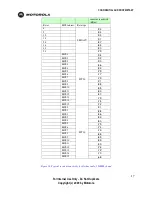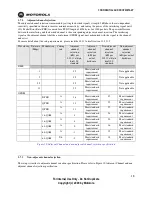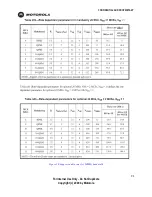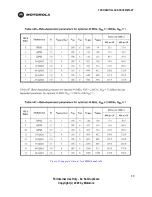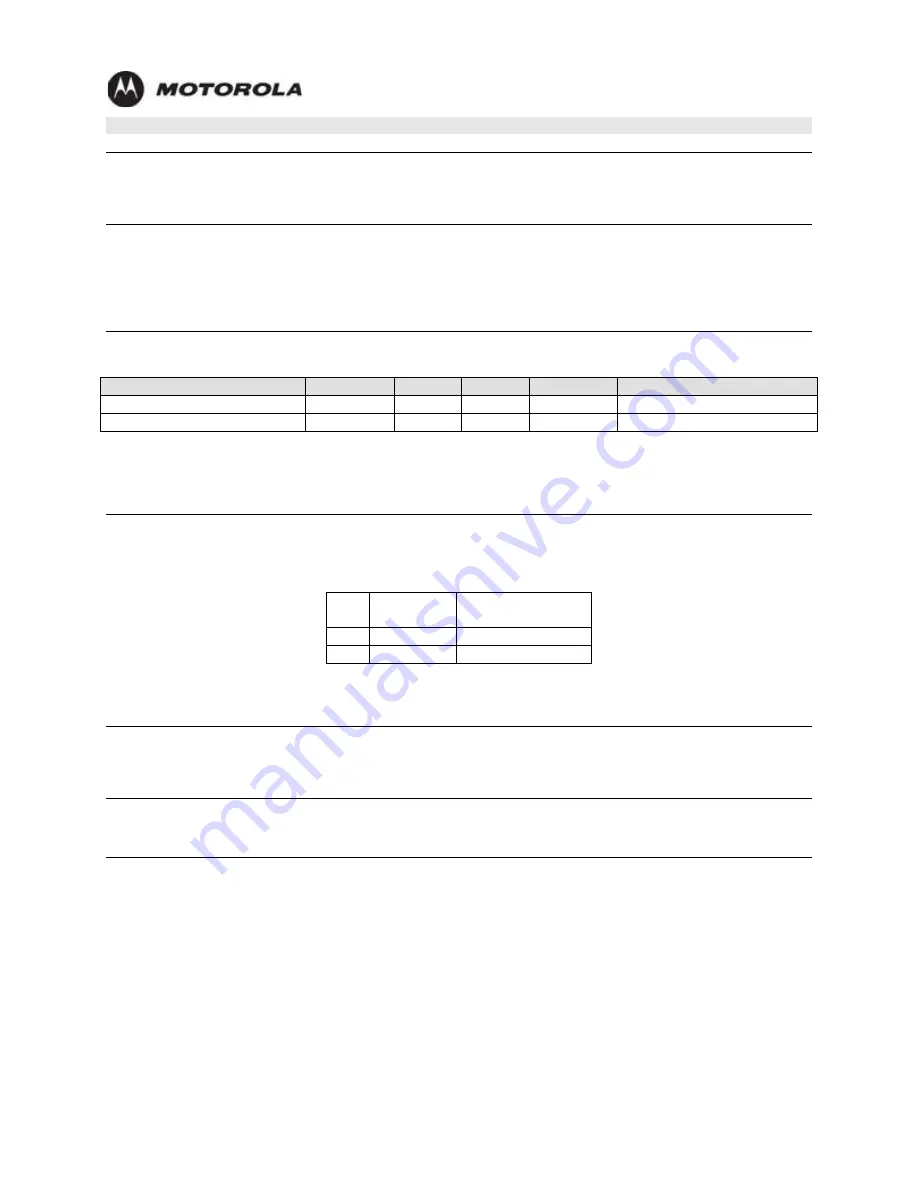
CONFIDENTIAL AND PROPRIETARY
For Internal Use Only - Do Not Duplicate
Copyright (c) 2009 by Motorola
7
2
Electrical
2.1
Antenna ports
The radio will have two U.FL antenna connectors. The radio can transmit on one or two antennas depending on the
operating modes. Furthermore, the radio can receive on one or two antennas as well.
2.2
Temperature range
This radio will be characterized and will maintain RF electrical specifications as stated here when the radio is used
in the MCN, NCAP or HP-NCAP. Please refer to the mechanical functional specification of the respective AP.
2.3
Radio power supply
Description
MIN
TYP
MAX
Unit
Comments/Notes
5.0 V Supply voltage
4.85
5.0
5.15
Vdc
5.0 V nominal, 3% variation
3.3 V Supply voltage
3.2
3.3
3.4
Vdc
3.3V nominal, 3% variation
Figure 2-Power supply specifications
2.3.1
Average power consumption
The average power consumption is specified as below. In this configuration, the Orthus radio is set to transmit at
maximum power at the given data rate.
Item Radio mode Power consumption
(RMS) max
1
3.3V
2.5W
2
5.0V
8W
Figure 3-RSM current and power consumption
2.4
RF channel bandwidth
The RF signal bandwidth shall be configurable to 20MHz, or 40MHz at 2.4 GHz band and 5.2 GHz band.
2.5
Channel allocation and frequency operating range
2.5.1
2.4 GHz band
The 2.4 GHz operating frequency ranges from 2.312 GHz to 2.472 GHz. In addition to that, 2.484 GHz can also be
selected. Normally, channel center frequencies are tunable in 5 MHz steps and are define as follows:
Channel center frequency
= 2407 + 5
n
(MHz)
Where,
n
= 1,2,…11
Common operating channels are:

















